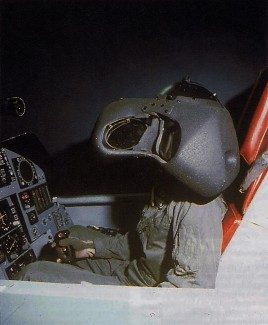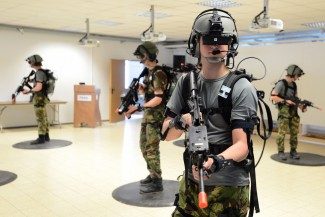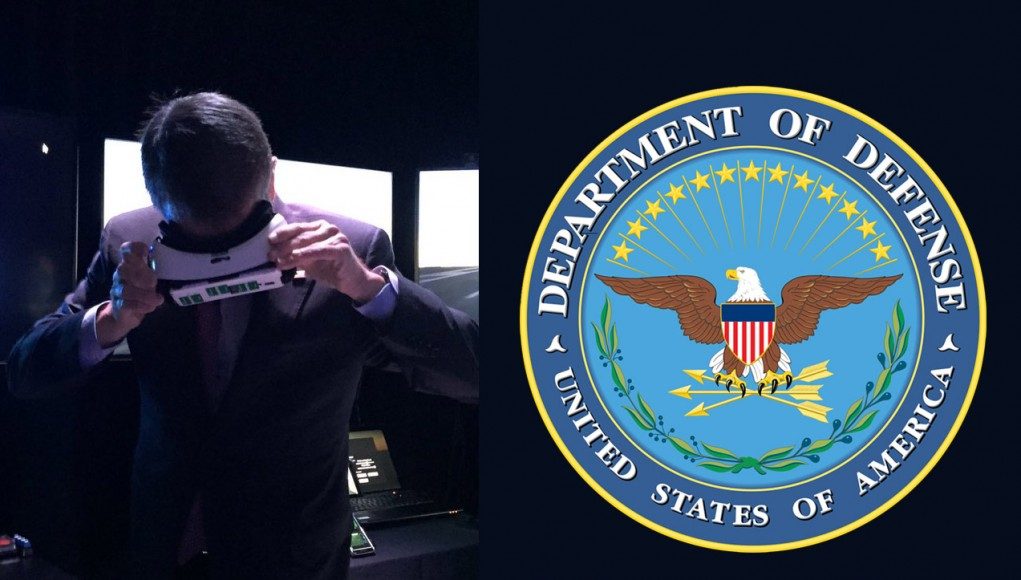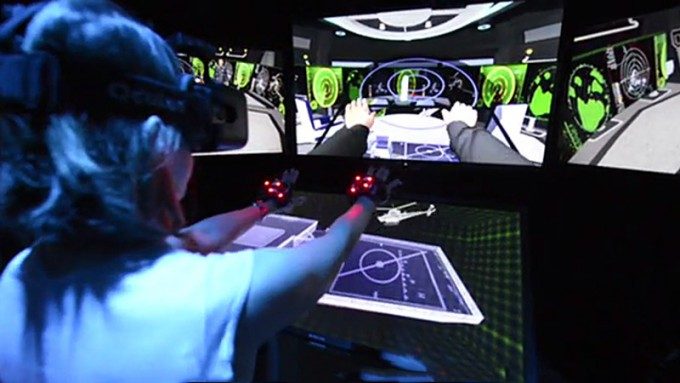The Secretary of Defense—second only to the President in control of the US military—recently stopped by the Navy’s BEMR lab to see the latest work being done with VR, AR, and mixed reality technology.
Get ready for some fun acronyms: the Navy’s Battlespace Exploitation of Mixed Reality (BEMR) is a laboratory within the Space and Naval Warfare Systems Center Pacific (SSC Pacific) which explores the application of consumer technology for battlespace visualization. The lab is equipped with the latest and greatest private sector VR equipment, and experiments with varying applications to serve the organization’s mission to “enable information dominance for our Naval, Joint, National and Coalition warfighters through research, development, delivery and support of integrated capabilities.”
Secretary of Defense Ashton Carter recently visited BEMR to see its latest work. We reached out to the organization, and while they couldn’t speak directly to the nature of Carter’s visit, we did get to learn more about the lab’s initiatives and the application of consumer VR technology within the military.
The military has of course been home to virtual reality technology for a long time; it’s one of the places where VR continued to thrive even after it failed to catch on with consumers in the ’80s and ’90s.

But, like most specialized equipment, military VR systems have traditionally been tremendously expensive—think tens of thousands of dollars for a head mounted display, and that’s before you even think about doing any tracking. The new wave of consumer virtual reality is changing all of that by providing high quality devices at comparatively minuscule prices, making VR useful in a wider variety of roles.
Training through simulation has been a key use of virtual reality in the military in the past, allowing soldiers to get near hands-on experience before ending up in the line of duty. And although the systems may have been expensive, they have actually been introduced not only as an effective training tool, but also as a cost saver.
“For the past few decades VR in the military has been used in simulations where training on the real systems was cost prohibitive or even extremely dangerous,” says Arne Odland, Chief Technologist at BEMR.
You can imagine the savings when training a fighter pilot using even a $20,000 head mounted display and a replica cockpit, when the actual plane itself might cost $100 million or more. But the consumerization of VR technology means a drastic shift in cost and use.
“At these gaming and consumer entertainment costs, we are seeing cost reductions of 100 times at a minimum for the hardware,” says Odland. “The resurgence of [consumer] VR is allowing for this technology to be brought to every soldier and sailor and not just for training.”
Where VR in the military was once primarily about training, BEMR is now exploring wider use-cases to improve visualization of the battlefield and even to benefit individual soldiers on the ground.
“Now, with the reduced cost environment, the government can ‘exploit’ the efforts of [the consumer] industry to drastically reduce costs and bring new capabilities to the troops,” says Odland.

One area where low-cost VR technology could be a boon for the military is in pre-mission preparation. While formerly high-cost VR equipment was best kept for the simulators and labs, it’s conceivable to deploy newer, cheaper technology to an active theater of war. While soldiers might train generally for how to effectively raid and clear a building, virtual reality could be used to allow them to walk through a specific building that is the target of a high value mission, intimately familiarizing them with the space before they ever set foot in the real thing.
The BEMR lab is part of the Navy’s latest Science & Technology plan which calls for leveraging advancements in a “rapidly changing landscape of new technologies,” but it’s also a reflection of technological comfort brought by new generations of servicemen and women.
“The modern naval force has grown up with computers at home, video games, arcades and head-mounted displays in their personal life,” says Dr. Lawrence Schuette, Director of Research at the Office of Naval Research. “Coming to float and seeing [this sort of technology] onboard ship is just a logical extension.”








